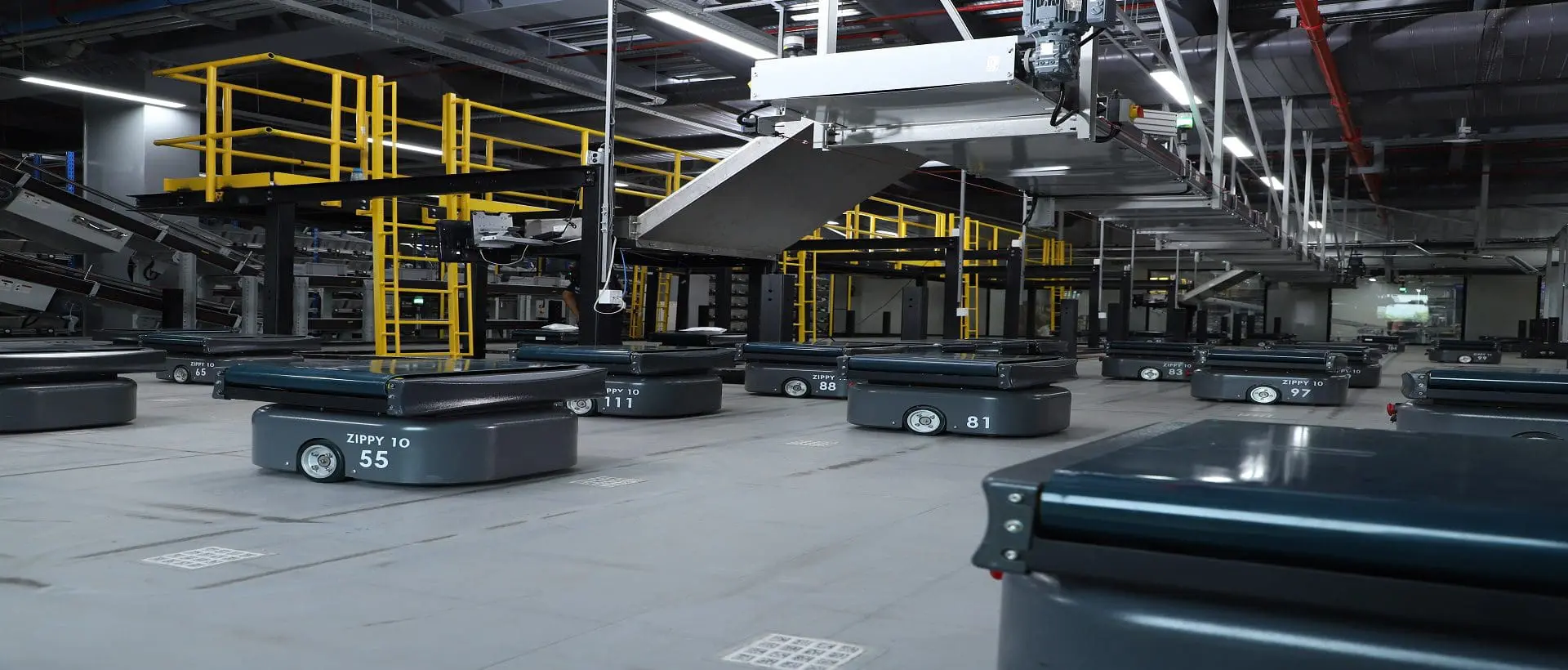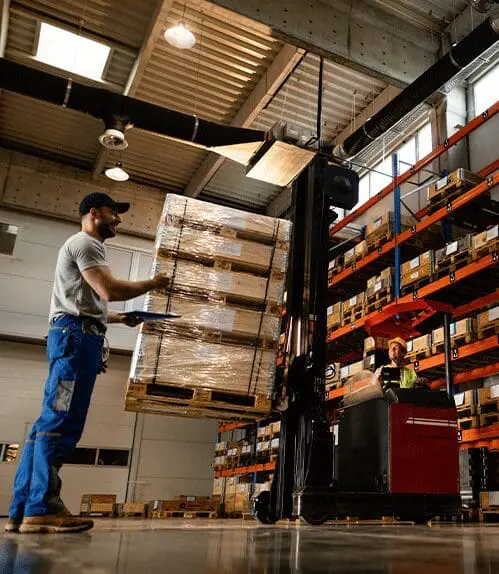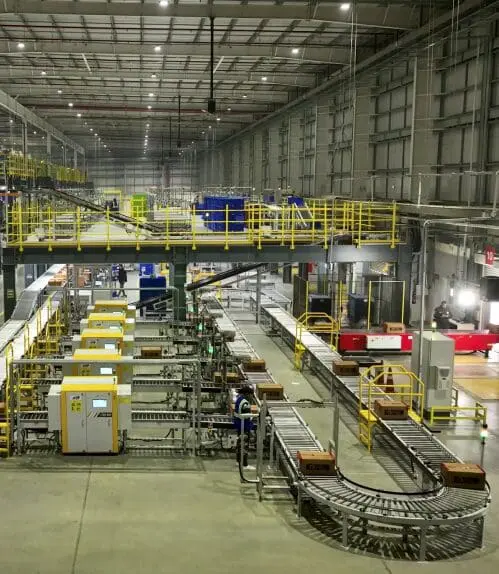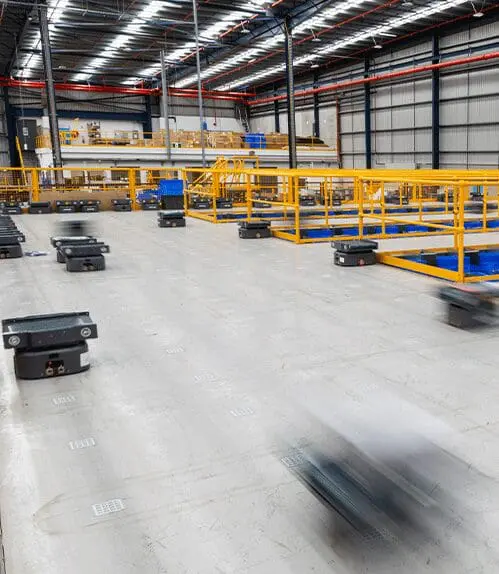Mobile robots are capable of locomotion, they move around their environment and are not fixed to one physical location. They can be classified in two ways; by the environment wherein they work and by the device, they use to move.
Types of Mobile Robots
Mobile robots can be autonomous or non-autonomous, to achieve motion, they rely either on guidance devices such as sensors or physical devices that allow them to travel a pre-defined navigation route in relatively controlled space.
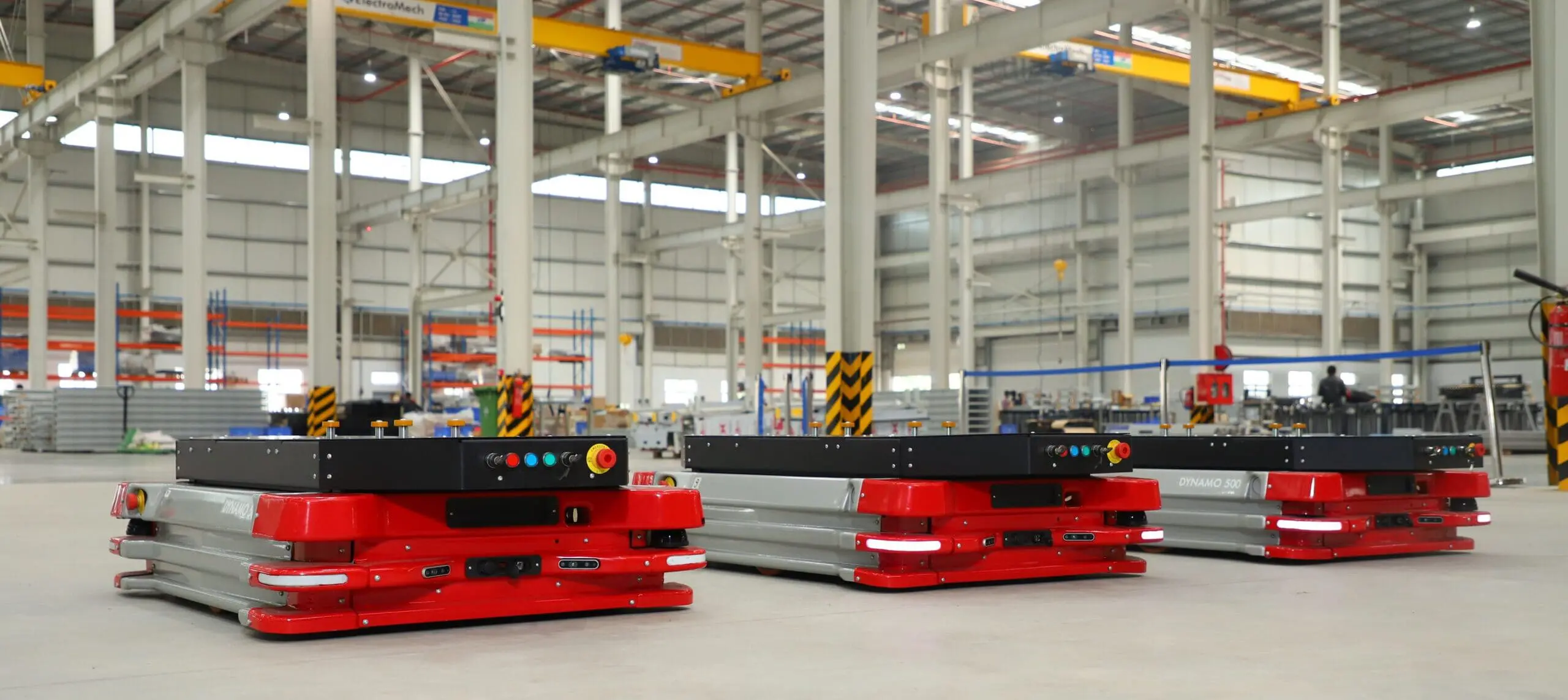
Autonomous mobile robots
Autonomous mobile robots (AMR) are just like humans; they can make their own decisions and perform tasks accordingly. Autonomous robots can perceive their environment and remember it. Based on this info they navigate in a controlled environment without any predefined path or electromagnetic guidance map, that way they offer flexibility to a large extent. AMRs also optimize the travel distance by calculating the shortest path for every mission & drive efficiency in the warehouse.
Let’s look into a few of its applications:
This includes robots bringing mobile shelf units filled with items to a workstation. In this case, pickers remain at their workstations while software-driven AMRs deliver shelves with different materials directly to the order pickers’ workstations.
- Picking Assist Autonomous Mobile Robots:
In this case, the robots travel to pick locations, where operators deliver (“pick”) goods based on the robot’s needs. They are an AMR base with an operator interface providing information about picking orders. The robot tells the operator “I want this item and here is where you can find it”. The user interface is also interactive, making it possible to provide further info about the product or receive information from the operator such as “picking accomplished”.
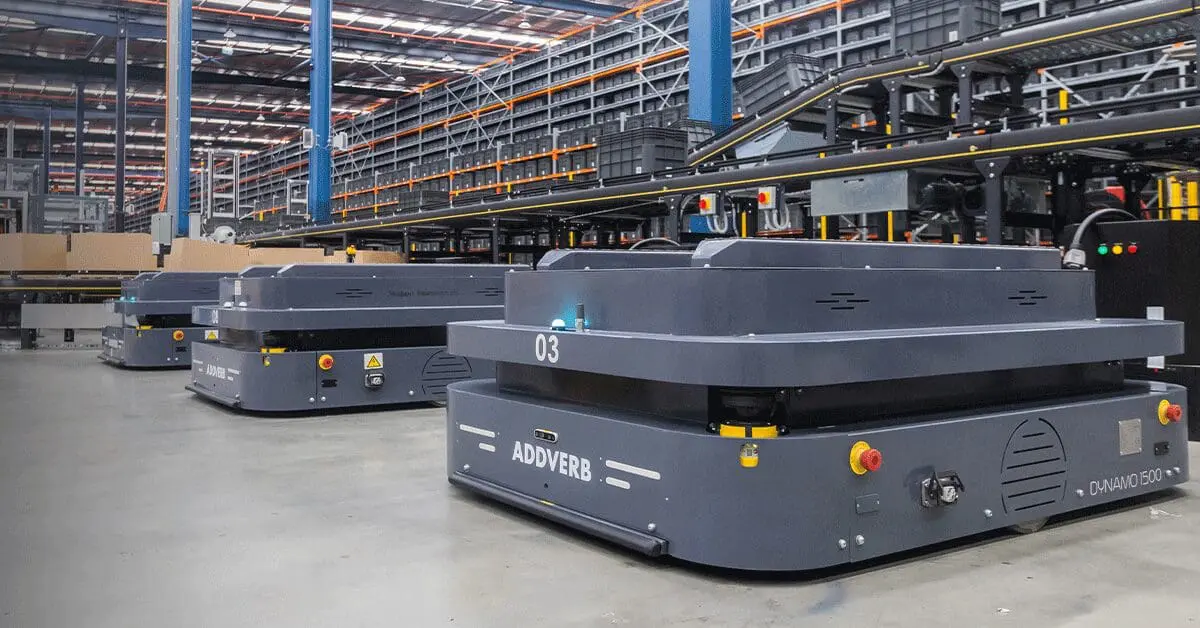
Non- Autonomous mobile robots
Guided mobile robots or non-autonomous mobile robots require some sort of guidance system or instruction to make a movement that allows them to travel pre-defined navigation maps in a controlled environment. The pre-defined navigation map such as magnetic tape, bar codes, wire,s or sensors installed on the environment’s floor creates an inflexible environment.
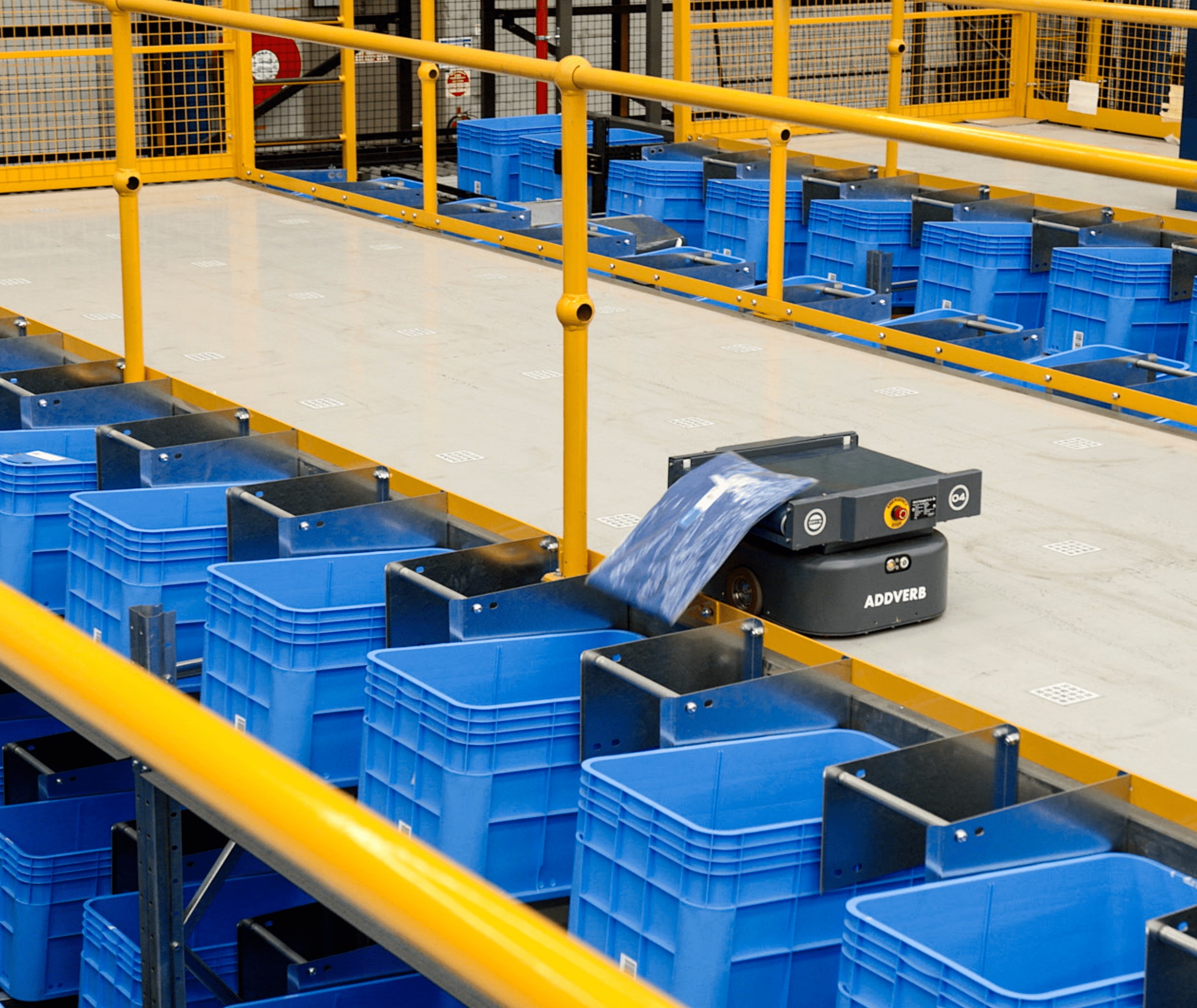
- Autonomous Guided Vehicle (AGV): This AGV requires an external guidance system in the form of magnetic strips to travel. These follow a rigid form of the preset route. Typical AGV applications incorporate transportation of raw materials, work-in-progress, and finished goods in support of manufacturing production lines, and storage/retrieval or other movements in support of picking in warehousing and distribution applications. AGVs provide automated material movement for a variety of industries including Automotive, Food & Beverage, Chemical, Hospitals, Manufacturing, Pharmaceutical, and Paper.
- Rail Guided Vehicle/Cart (RGV/RGC): RGV/RGC is a fast, flexible, and easily installed material transport system that travels at a predefined path guided by rails or tracks. RGC has separate input/output stations that allow it to perform multiple operations at once. These mobile robots are an efficient, cost-effective and fast option for complex sorting applications.
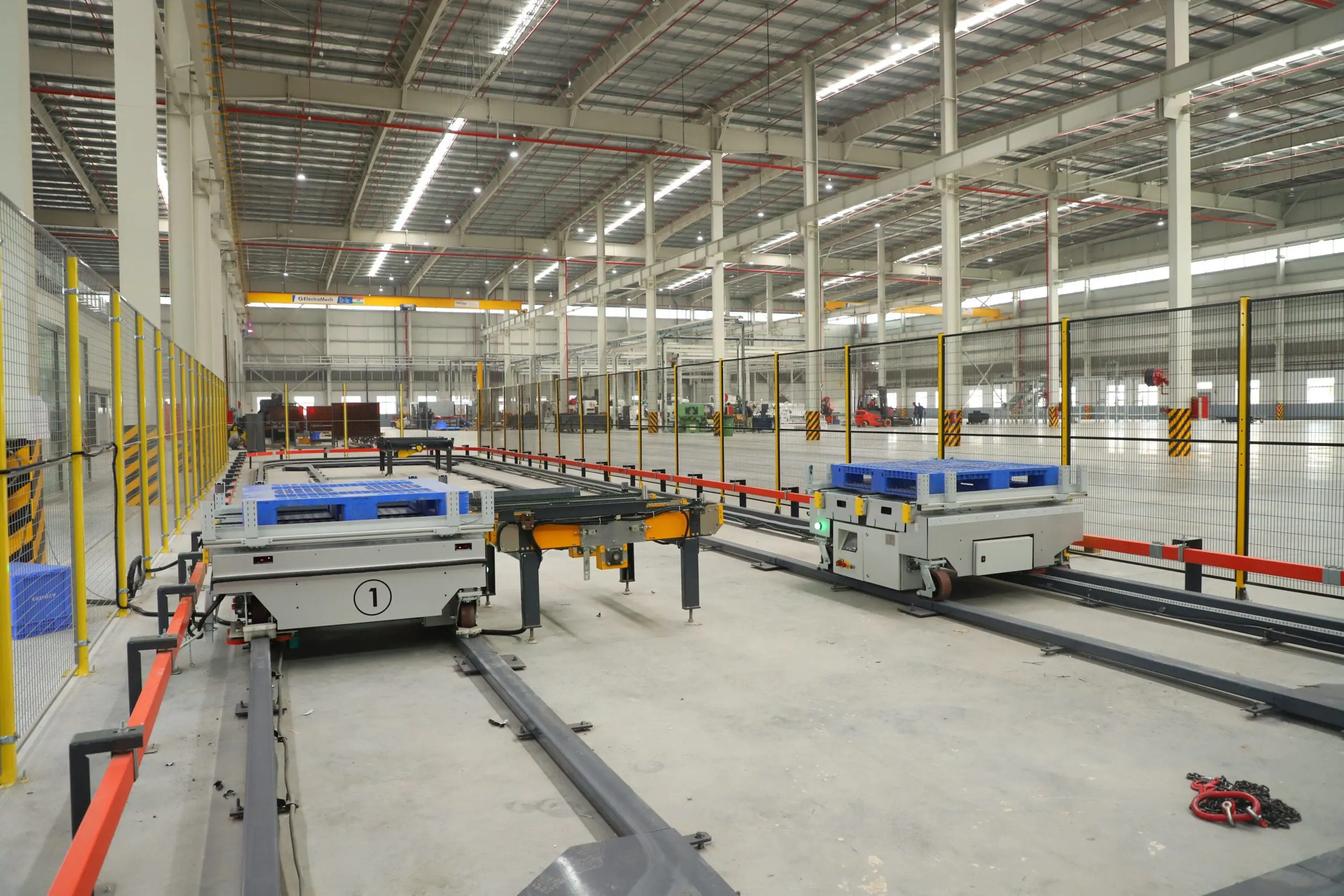
- Guided Fork-lifts: This specific AGV type is inspired by conventional human-manned forklifts. These forklifts are becoming increasingly complex and intelligent full of autonomy for some applications. These could be manned/unmanned traveling with the help of external devices such as tablets, humans, etc. The forklift AGV is designed to provide both horizontal and vertical movement of the load.
- Sorting Robots: These robots play an important role in high-speed sorting esp in fulfillment centers. These robots work on a mezzanine with chutes/rabbit holes for location or order positions. Sortation is easily achieved by utilizing a fleet of sorting robots that sort the orders by dumping them through chutes/rabbit holes. The dropped orders or parcels are collected in sacks or containers, which will be shipped directly to customers.

Environments where Mobile Robots can be Effectively Deployed.
- Manufacturing: Handling tasks such as transporting parts and materials in factories.
- Warehousing: Assisting with inventory management and order fulfillment.
- Outdoors: Supporting agriculture, construction, and mining operations.
- Healthcare: Aiding with medication delivery and patient care in hospitals.
- Public Spaces: Providing assistance and security in locations such as airports and malls.
Finally…
Mobile robots are in various shapes and needs, Along with commercial and industrial sectors, mobile robots are a common sight in public sectors such as hospitals and airports as well. With the evolution of advanced navigation systems & enhanced safety features, they are only a step away from becoming human allies in our everyday activities.
Curious about warehouse automation? Dive into our other blogs to discover more

FAQ
What are mobile robots?
Mobile robots are autonomous or semi-autonomous machines capable of navigating and performing tasks in various environments without continuous human intervention.
What roles do mobile robots play in warehousing and logistics?
They manage inventory, fulfill orders, and transport goods, streamlining operations and reducing labor costs.
What are the applications of mobile robots in healthcare?
They deliver medication, transport patients, and assist with cleaning tasks, enhancing patient care and safety
How are mobile robots utilized in public spaces?
They serve as customer service assistants, security monitors, and information providers, improving user experience and safety.
What are the benefits of using mobile robots?
Benefits include increased efficiency, improved safety, reduced labor costs, enhanced accuracy, and greater flexibility.


